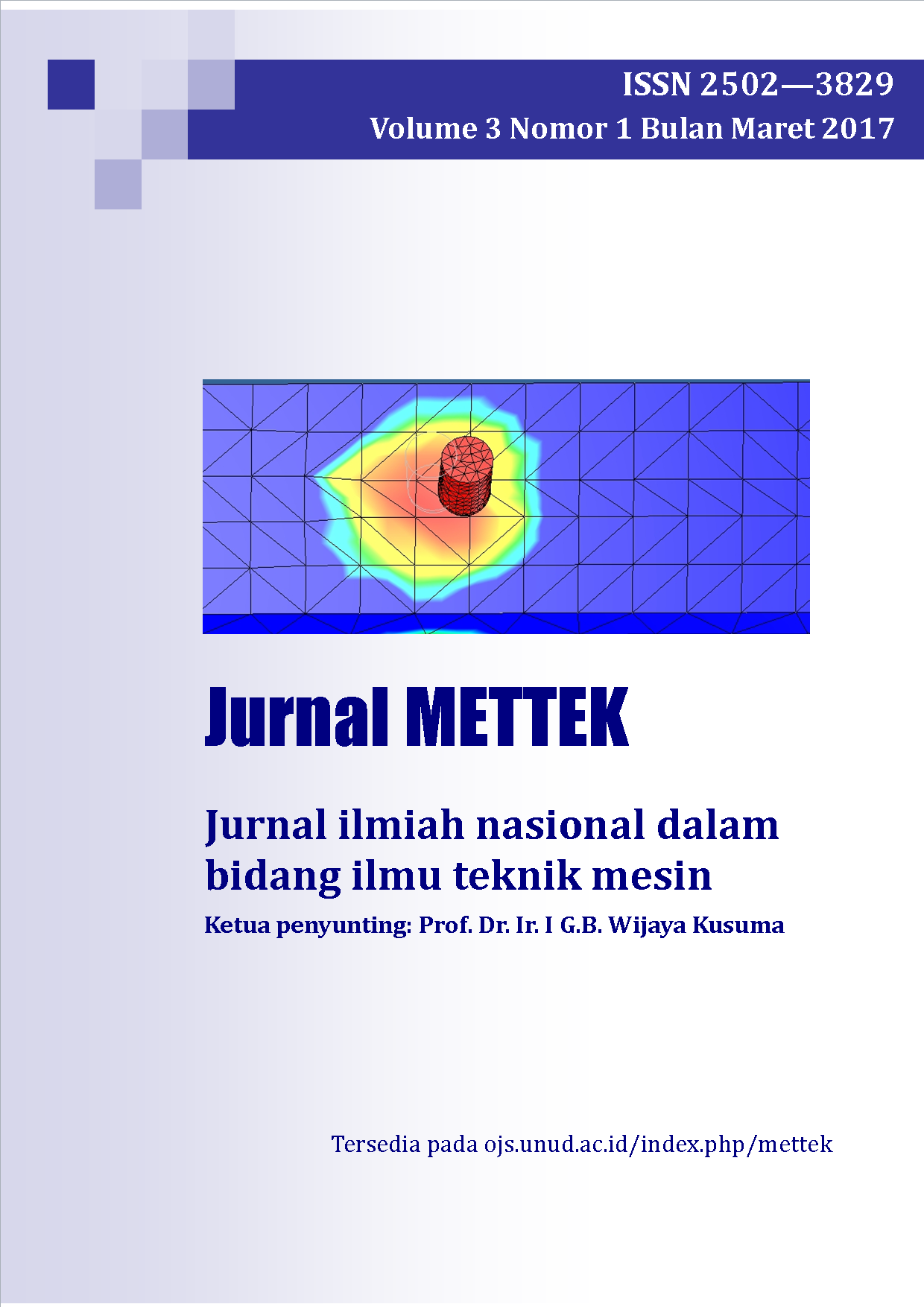ANALISIS SIFAT FISIKA BAHAN BAKAR DARI LIMBAH ORGANIK
Abstract
Serangkaian penelitian telah dilakukan oleh beberapa ahli untuk mengatasi krisis energi di berbagai negara, mulai dari pembuatan etanol dan biogasoline (campuran antara gasoline dan alkohol), pemakaian bahan bakar gas, hingga proses pembuatan bahan bakar alternatif pengganti bensin lainnya.Dalam penelitian ini, pembuatan alkohol dari limbah semangka dilakukan dengan metoda fermentasi dalam ruang tertutup (anaerob). Diharapkan proses ini dapat mempercepat proses pembuatan alkohol dan dengan kadar alkohol yang cukup tinggi. Dari hasil pengujian didapatkan bahwa untuk menghasilkan alkohol diperlukan campuran 15 kg sampah organik dengan 0,48 kg ragi dengan kadar alkohol 10,1%. Agar layak menjadi campuran (aditif) dalam biogasoline maka alkohol 10,1% tersebut didestilasi bertingkat hingga menghasilkan kadar alkohol yang lebih tinggi, yang divariasikan mulai dari kadar 90%, 93% dan 95%. Setelah itu dibuat biogasoline dengan variasi campuran A10, A15 dan A20 untuk bensin dan alkohol. Dari hasil pengujian massa jenis, kekentalan, nilai kalor, titik nyala dan titik bakar dapat diketahui bahwa biogasoline dengan rasio campuran A10 dengan kadar alkohol 95% ternyata memiliki sifat-sifat fisika yang mendekati sama dengan bensin murni. Artinya untuk menghasilkan biogasoline 100 ml dan memiliki sifat fisika yang mendekati sama dengan bensin murni diperlukan bensin sebanyak 90 ml dan alkohol dengan konsentrasi 95% sebanyak 10 ml.
A series of studies have been undertaken by experts to address the energy crisis in many countries, ranging from the manufacture of ethanol and biogasoline (a mixture of gasoline and alcohol), the use of gas fuel, to the process of making other alternative gasoline alternatives. In this research, the manufacture of alcohol from watermelon waste is done by fermentation method in an enclosed space (anaerob). It is expected that this process can accelerate the process of making alcohol and with a high enough alcohol content. From the test results obtained that to produce alcohol required a mixture of 15 kg of organic waste with 0.48 kg yeast with alcohol content of 10.1%. In order to be eligible to be a mixture (additive) in biogasoline, the 10.1% alcohol is distilled up to produce higher levels of alcohol, which varies from 90%, 93% and 95%. After that, biogasoline was prepared with mixed variations of A10, A15 and A20 for gasoline and alcohol.From the results of testing of density, viscosity, heat value, flash point and fuel point, it can be seen that biogasoline with mixed ratio of A10 with 95% alcohol content turns out to have physics properties that are close to the same as pure gasoline. This means to produce 100 ml of biogasoline and has physics properties that close to the same as pure gasoline is required as much as 90 ml of gasoline and 95% concentration of alcohol as much as 10 ml.
Downloads
References
[2] Anonymous. (Aug 31, 2009). Power Finance & Risk.Watermelon Pegged For Biofuel Industry; London.
[3] Badr-Elden, Awatef M; Nower, Ahmed A; Ibrahim, Ibrahim AAuthor Information; Ebrahim, Mohsen K HAuthor Information; Elaziem, Tamer M Abd. (May 1, 2012). Minimizing the hyperhydricity associated with in vitro growth and development of watermelon by modifying the culture conditions. African Journal of Biotechnology; Victoria Island 11.35 : 8705-8717.
[4] Yeliana, (2004),Bahan Bakar dan Teknik PembakaranBahan Bakar, Diktat Program Studi Teknik Mesin Fakultas Teknik Universitas Udayana, Denpasar.

This work is licensed under a Creative Commons Attribution-NonCommercial-ShareAlike 4.0 International License.







